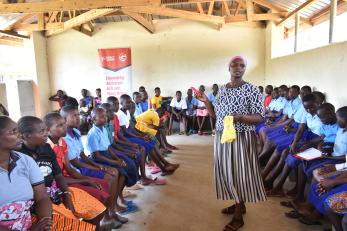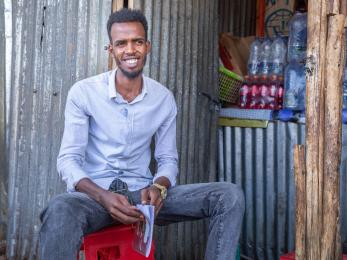The Sexual Reproductive Health Rights Program Learning Brief

Sexual and reproductive health (SRH) is a vital component of health that integrates the physical, mental, and social well-being of individuals. In the Karamoja subregion (Uganda), 23.6% of adolescent girls aged 15-19 have begun childbearing. The region’s demographic characteristics include a higher prevalence of polygamous unions (58%) compared to the national average (25%). The total fertility rate (TFR) in Karamoja is 7.9, differing from the national rate of 5.6. Additionally, 59% of women with six or more surviving children in the region express a desire for additional children, varying from 20% nationally.
Several factors contribute to the underutilization of reproductive health services in hard-to-reachhard to-reach settings, including social stigma, ignorance, lack of confidentiality and privacy, misconceptions about service quality, and religious and cultural prohibitions. The prevalent practices of polygyny and ‘bride capture’ also increase the risk of sexually transmitted infections (STIs). Approximately 25% of women in Karamoja deliver at home, exposing them to complications during childbirth that require emergency skilled attendance. Furthermore, gender roles and responsibilities in Karamoja assign women primary responsibility for domestic work and household provision. This situation can impact women’s ability to prioritize rest and healthcare during pregnancy and childbirth. These factors intersect with adolescent sexual and reproductive health (ASRH) in complex ways.
This learning brief highlights effective, context-relevant practices for enhancing access to sexual reproductive health services and products for youth and adolescents in the Karamoja region. Built on evidence of positive change amongst participants, it advocates for scaling up successful strategies to drive broader impact. The brief explores key learning questions, including:
- What are the specific SRHR needs and gaps for young people in the Karamoja subregion?
- What are the best practices for creating and maintaining safe spaces for discussing SRHR topics?
- What impact does the involvement of local government officials, traditional leaders, elders, religious leaders, and civil society organizations have on the sustainability of SRHR programs?
- How effective is the use of peer educators in normalizing positive attitudes towards SRHR and driving the uptake of services?
Download the full report now to learn more about the effective practices and strategies for enhancing access to sexual reproductive health services and products for youth and adolescents in Karamoja, and join the effort to create positive change in the region.


